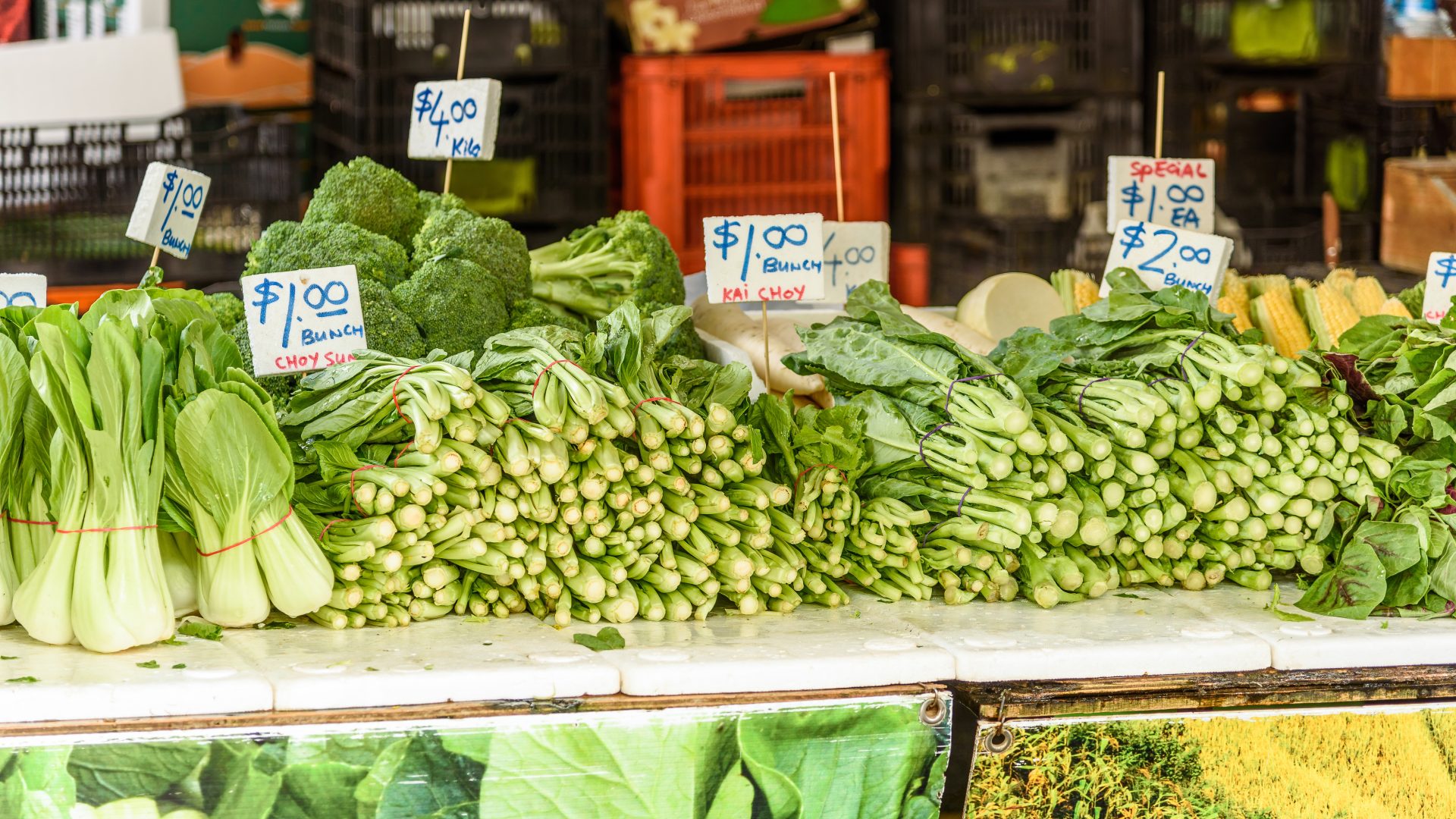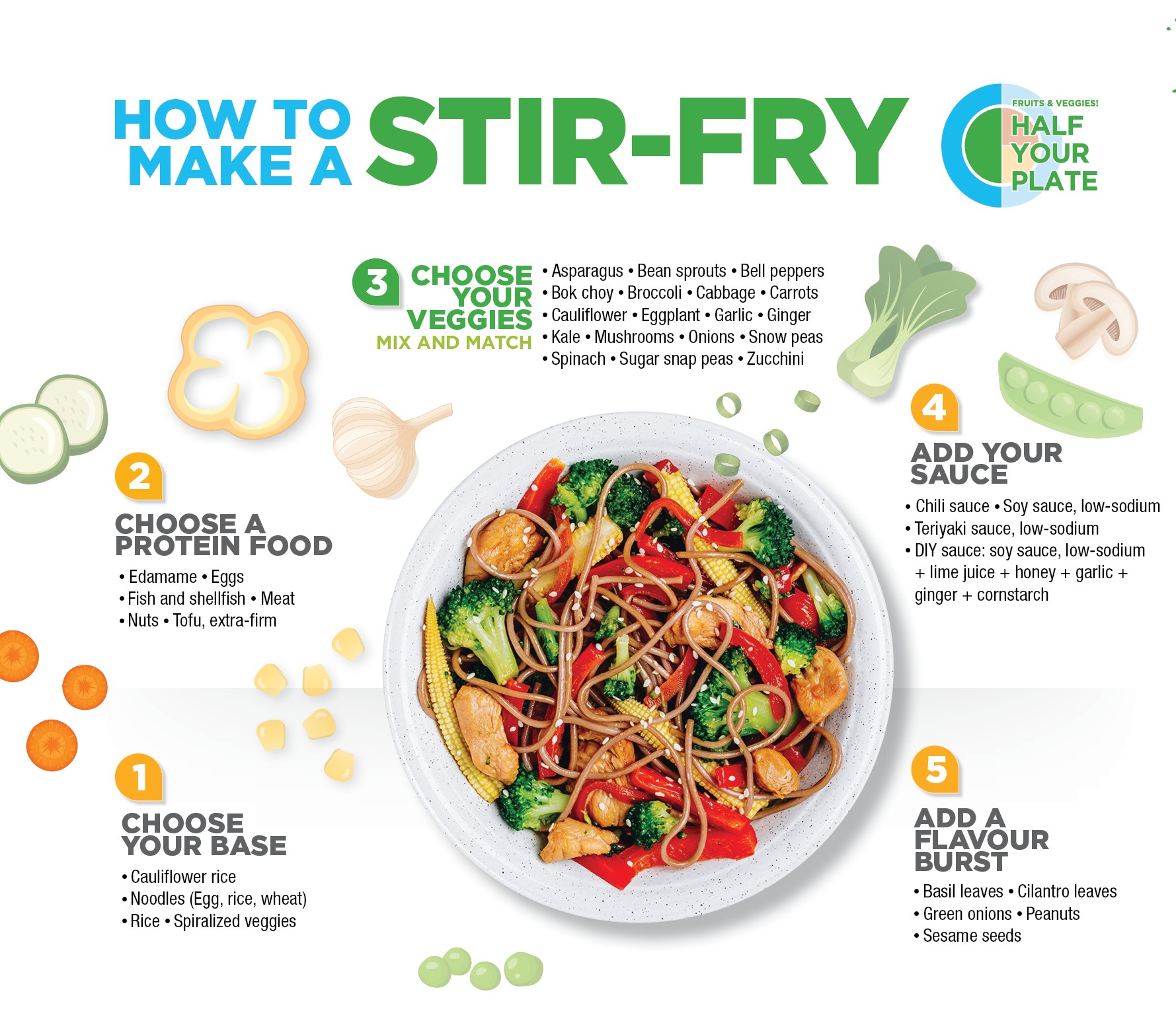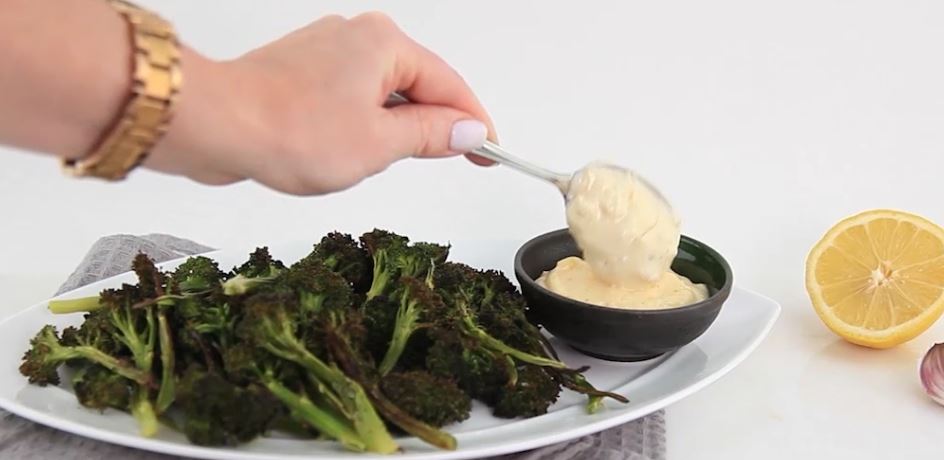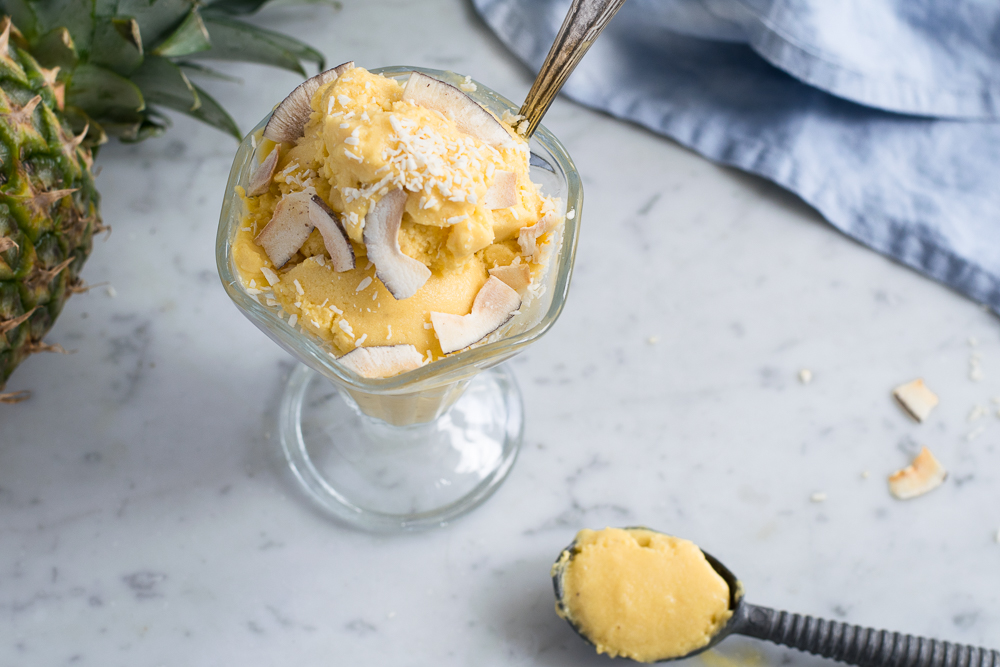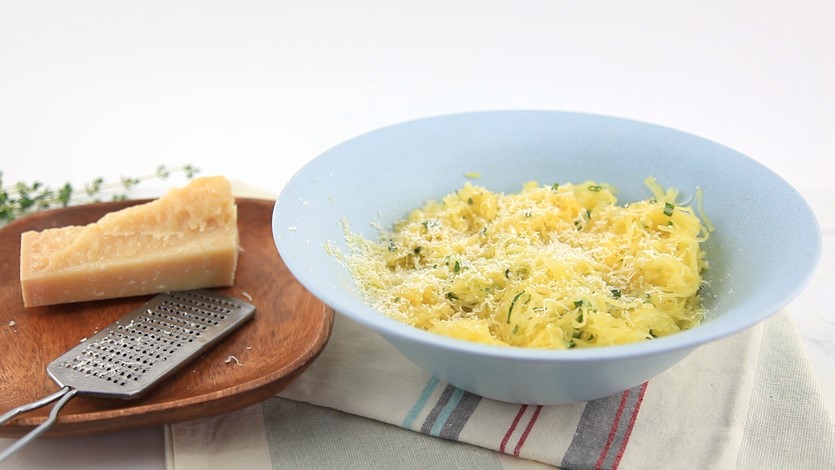By Amy Chow RD
If you’re looking to add some new flavours and textures to your meals, why not try incorporating more Asian produce? From bok choy to dragon fruit, there are plenty of delicious and nutritious fruits and vegetables to explore. Asian cuisine traditionally involves cooking vegetables rather than eating them raw and is known for its freshness and bold flavours. This guide will give you a glimpse into some cultural produce you can find in Canada to diversify your palate.
Leafy vegetables
Leafy vegetables are used to add flavour and nutrition to many dishes – they are high in fibre, vitamin C, vitamin K, iron, and folate. To prepare, separate each leaf at the stalk end and rinse each leaf well under water. Let the leaves soak in a big bowl of water for a few minutes and the remaining dirt and debris will sink to the bottom of the bowl.
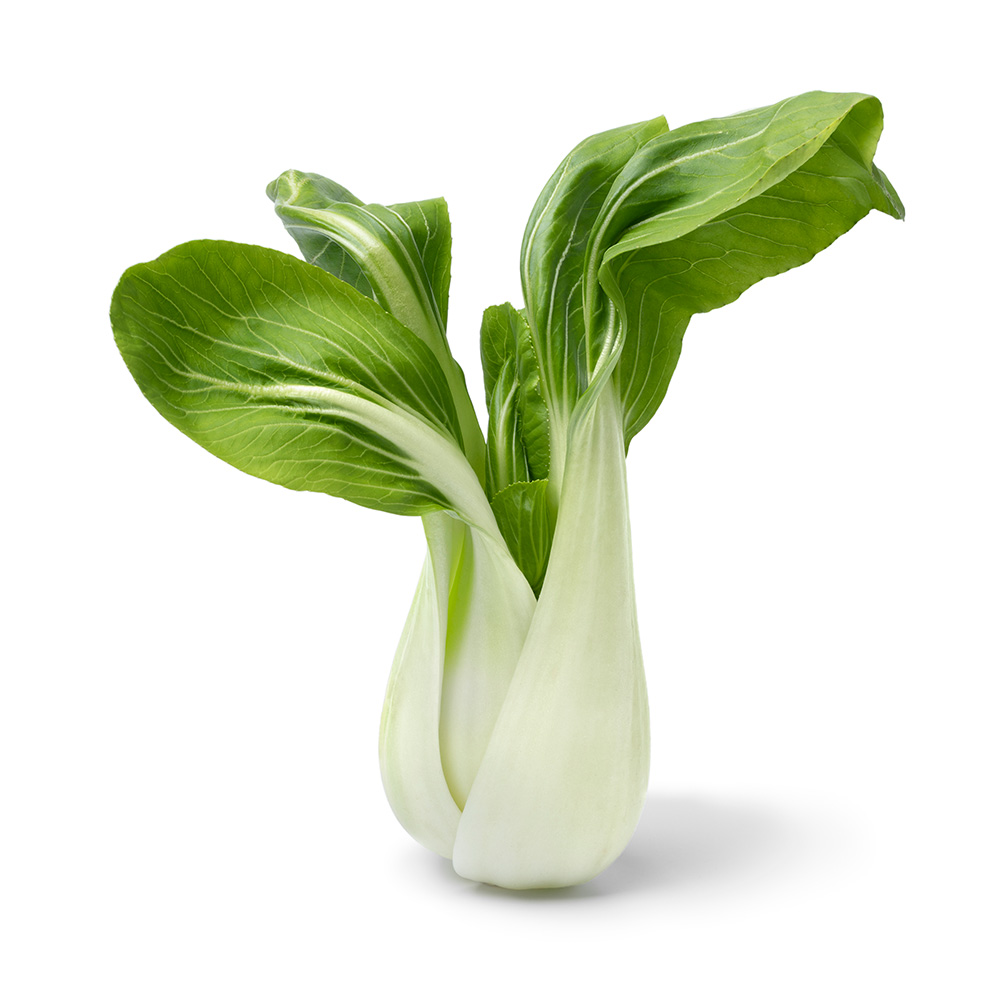
Leafy vegetables such as chives and scallions are flavour boosters that add fresh aromatics to stir-fries, soups, and dumplings. Others such as Chinese broccoli and bok choy are great steamed or stir-fried on their own with sauces or with meat, tofu, or noodles. Leafy vegetables are also commonly used in soups (typically served as a dish with dinner) to add flavour, nutrition, and texture.
Bok choy, also known as Chinese cabbage, has a mild, slightly sweet flavour and a crunchy texture. It is a member of the Brassica family, which also includes other familiar vegetables such as broccoli, cauliflower, and kale.
Chinese broccoli, also known as gai lan, has thick, flat, and glossy blue-green leaves with thick stems that are similar to broccoli, but with a slightly more bitter taste.
Water spinach is also known as Chinese watercress or morning glory. It has long, slender stems and leaves and provides a slightly sweet and nutty flavor.
The quickest and tastiest way to incorporate these leafy veggies is in a stir-fry (think easy weekday meals!) The secret to a great stir-fry is to use a large pan or wok and to prep and wash all of your ingredients before cooking. To ensure even cooking, chop your protein, veggies, and aromatics into uniform pieces. Use a neutral oil with a high burn point, such as canola or grapeseed oil, and medium-high heat. Start by cooking your protein until it’s browned and almost cooked through, then remove it from the pan and set it aside. Next, add your vegetables, starting with the thicker stalks as they take longer to cook. Stir fry them for a minute or two before adding the rest of your vegetables and aromatics. Once everything is cooked through, add your sauce and return the protein to the pan to heat through. Top with a few drops of sesame oil for extra flavour. Serve over rice or noodles and enjoy!
Mushrooms
Mushrooms are a staple and versatile ingredient in many traditional Asian dishes. With their unique textures, flavours, and nutritional profiles, these mushrooms add depth and complexity to many dishes. They are a rich source of nutrients – including fibre, vitamin D and B vitamins and are often used as part of traditional medicine.
Shiitake mushrooms are one of the most popular and versatile mushrooms in Asian cuisine – you can get them fresh or dried. Rehydrate dried shiitake mushrooms by soaking them in warm water for at least 15 mins before using and be sure to keep the soaking water to add flavors to your soups or sauces. Shiitake mushrooms have a meaty and earthy flavour and are often used in savoury dishes such as stir-fries, soups, and stews.
Enoki mushrooms have a delicate and slightly crunchy texture with a mild and slightly sweet flavour. To prepare, trim off the roots with a sharp knife and separate the clusters with your hands. Give the mushrooms a quick rinse under cold running water to remove any dirt or debris. They are often used in hot pots (similar to the concept of fondue – a pot of simmering broth is placed on the dining table for cooking ingredients and eating simultaneously), sukiyaki (similar to hot pot but with a soy sauce-based broth) and in main dishes such as sliced beef with enoki mushrooms.
Fruits
Asian fruits are a rich and diverse group that are enjoyed for their distinct flavours and nutritional benefits – they are often high in fibre, vitamin C, and potassium. Here are some of the most popular ones:
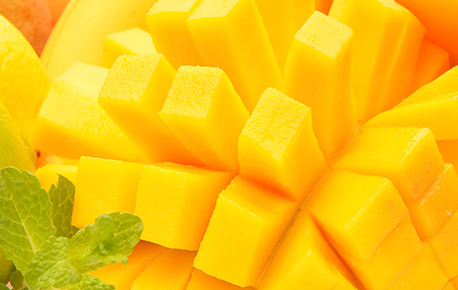
Mango is a tropical fruit that is enjoyed raw for the sweet, juicy flesh as well as used in desserts such as mango sticky rice and mango sago pudding.
Dragon fruit is a unique looking fruit with a vibrant pink or yellow exterior and a white or pink interior with tiny, edible black seeds. It has a mild, slightly sweet flavour and is often eaten raw and as part of a fruit salad.
Asian pears, also known as apple pears, have a round, apple-like shape and a crisp, juicy texture. They are often eaten fresh and used in sweet or savoury soups and desserts.

This is just a glimpse into the wonderful world of Asian produce, and there are countless variations and regional specialties to explore. Whether you’re an adventurous foodie or just looking to add some variety to your diet, we encourage you to give these Asian fruits and vegetables a try!
About Amy: Amy Chow is a Registered Dietitian based in Langley, BC. With over a decade of experience, Amy has a special interest in pediatric nutrition, food allergy management, digestive health, and eating disorder recovery. She is the founder of Find BC Dietitians Inc. and is passionate about connecting people with nutrition experts across BC.
